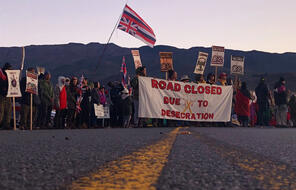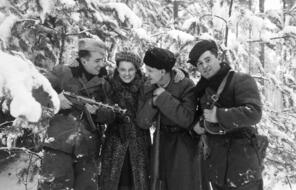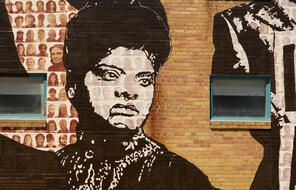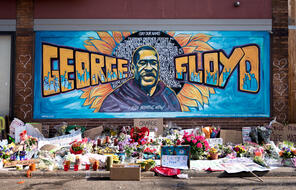Japanese American Incarceration Camp Protests
Subject
- History
- Social Studies
Language
English — USUpdated
Get it in Google Drive!
Get everything you need including content from this page
Get it in Google Drive!
Get everything you need including content from this page
The following is a description of several protests that occurred inside the incarceration camps. 1 (Note that this is not a comprehensive list and many more protests occurred inside the camps.)
6/17/1942
Santa Anita Assembly Center, CA
100 prisoners protest their working conditions by participating in a “sit-down strike,” which involves stopping work and “sitting down” at their work stations until their demands are met. Many of the prisoners were women assigned to work on camouflage nets for the Army, who had to meet high net quotas, were forced to labor under the hot sun, often in a kneeling position for eight hours with inadequate food and water. Many of the workers were also allergic to the hemp nets, burlap, and dyes used in the operation. The strike was successful in getting some changes made.
October 1942
Heart Mountain, WY
Military police arrest 32 young children for sledding outside of camp boundaries. Although the children were released to their parents, inmates were quick to condemn the treatment of the children by the police. In response, the Army attempted to recruit volunteer workers to construct a barbed wire fence around the perimeter of the camp. The majority of working-age men went on strike, refusing to participate in the project. Three thousand inmates signed a petition charging that “the fence proved that Heart Mountain was indeed a ‘concentration camp’ and that the evacuees were ’prisoners of war.’ “
Nov 1942 - Oct 1943
Jerome, AK
Multiple work stoppages protesting dangerous working conditions by prisoners who were being forced to fell trees for the camp’s fuel (37 woodcutters were injured and 1 killed in a trailer accident), and the large pay gap between what prisoners and white staff were paid.
12/6/1942
Manzanar, CA
Unrest breaks out in the Manzanar incarceration camp following the beating of Fred Tayama, a leader of the Japanese American Citizens League, which advocated for a military draft of Japanese Americans. Harry Ueno, a popular leader of the Mess Hall Workers Union, was arrested for beating Tayama. 2,000-4,000 protesters gathered to demand Ueno’s release. Discontent had also been building up at Manzanar with suspicions that white administrators were stealing food to sell on the black market and many other grievances. Soldiers fired into the crowd, and eleven prisoners were shot in the back; two died due to the lack of medical supplies in the clinic, one a teenage bystander. Martial law was declared. Many people wore black armbands in the following days as a badge of protest and held an informal strike.
July 1943
Minidoka, ID
Strike by camp laundry and latrine maintenance workers in protest of the government’s reduction of paid jobs at the camp; women gather at the office of the Acting Director to demand that he insure that the camp would have hot water.
10/7-12/1943
Tule Lake, CA
Coal strike at Tule Lake with workers demanding clothing allowance to pay for gloves and clothing to wear while shoveling coal. (The coal dust destroyed the worker’s shoes, pants, and shirts, and covered the worker’s faces and hands with black dust that didn't wash off easily.)
Oct/Nov 1943
Tule Lake, CA
Work stoppage by farm laborers to protest unsafe working conditions after one had been killed in a truck accident and several injured. There were numerous other labor protests at Tule Lake.
Connection Questions
- What patterns do you notice about the kinds of protests that occurred inside the incarceration camps? How did people demonstrate their discontent?
- What factors or conditions inside the camps contributed to the protests?
- How does this reading connect, extend, or challenge your understanding of what it means to pursue freedom and democracy in the United States?
Teach a Facing History lesson featuring this resource.
- 1Timeline adapted from the Timeline of Resistance 1942-46, UCLA Asian American Studies Center.
How to Cite This Reading
Facing History & Ourselves, “Japanese American Incarceration Camp Protests”, last updated September 12, 2024.











